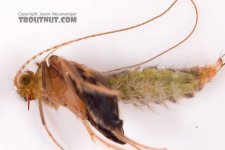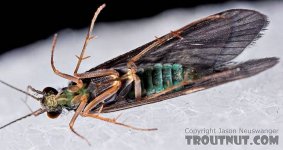O
outsider
Active member
- Joined
- May 28, 2010
- Messages
- 1,538
I was fishing my favorite local stream the other day when I snagged a small branch. On it was a cadis fly in transition from pupae to adult. This specie happens to have a dark dun wing and a bright apple green body. The wings were fully formed, and the body was so robust. No, it was fat. Although I do quite well with my caddis imitations, it made me rethink the diameter of the body. Anyone else have similar observations?






